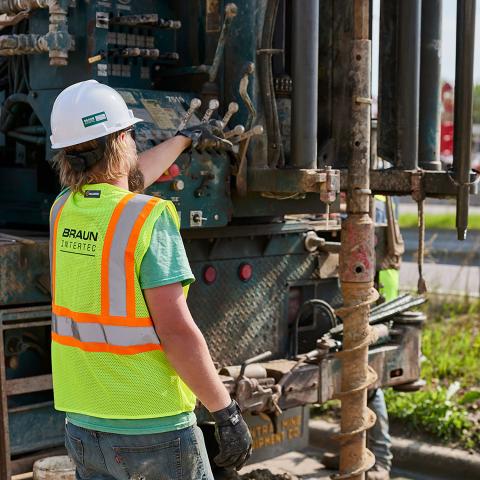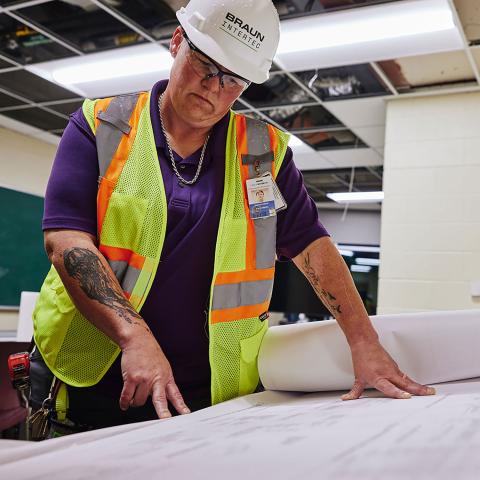Petrographic Analysis

Braun Intertec can determine the root cause of construction-related issues. By looking into the microstructure and chemical composition of building materials, we can help identify potential constructability issues or determine the cause of a material failure. Our petrography laboratory evaluates both the macro and microstructure of materials.
Our chemistry laboratory analyzes samples in conjunction with our petrographic laboratory to identify and refine our observations, providing a holistic evaluation of the materials such as concrete, aggregates, mortars, cement, clinker, coatings, tile and grouts.
When concrete issues develop, either during construction or later in the structure’s service life, petrographic examination is one of the most useful techniques to determine the underlying cause(s). Petrographic examination uses transmitted, reflective, and polarized light microscopy. In addition, other instrumentation and analytical techniques may also be used. These include X-Ray Diffraction (XRD), X-Ray Fluorescence (XRF), Fourier-Transformed Infrared (FTIR) and various other chemical methods. Depending on the complexity of the project, a high-powered microscope such as the scanning electron microscope may also be used. These tools help determine the cause of concrete distress and provide an understanding of material properties and how they can impact performance.
Concrete distress can be related to physical or chemical attacks on concrete. Braun Intertec conducts petrographic examination on concrete samples to determining the root cause of an issue observed in the field.
Concrete
- Causes of surface defects such as: scaling, popouts, cracking, delamination, and dusting
- Identifying reactive aggregates and various aggregate issues such as alkali-silica reaction (ASR), alkali-carbonate reaction (ACR), sulfate attack from pyrrhotite, high clay content from fine aggregate
- Determining air-void content and parameters of the air-void system
- Estimating water-to-cement(itious) ratio
- Investigating for the presence of mineral admixtures or pozzolans, and estimating relative percentage of cementitious materials
- Causes of low strengths
- Extent of fire damage
- Freeze-thaw or frost damage
- Chemical attack
- Identifying efflorescence and secondary deposits
- Identifying penetrating sealers and overlay systems
- Identifying of potential contaminants
Mortar
- Identify cementitious materials and aggregates
- Calculate mortar proportions
- Estimate mortar types: M, S, N or O
- Design tuck pointing mortar
- Perform failure analyses of masonry walls
Aggregate
Not all rocks or aggregates are created equal. The petrographic examination of aggregates provides valuable data on the durability and/or potential deleterious effects of the aggregate when used in concrete. The evaluation is often performed in conjunction with physical testing. Our petrographic laboratory can perform evaluations on both manufactured and natural materials to meet your project needs.
- Fully characterize the mineral constituents and quantify the various rock type present
- Identify the potential for ASR or ACR
- Identify other potentially deleterious components; this may include: reactive silica, sulfides such as pyrite or pyrrhotite, as well as shale, micas, clays, etc.
- Depending on the nature of the project, we may also use analytical methods (e.g. XRF, XRD) as well as other physical testing to fully characterize the material.
Petrographic examination of rock or aggregate may also be performed for these purposes:
- Exploration for new or existing viable sources
- Quality control of source
- Durability information for riprap and erosion control stone
- Micro and macroscopic description of rock for geotechnical, environmental, or mining purposes


